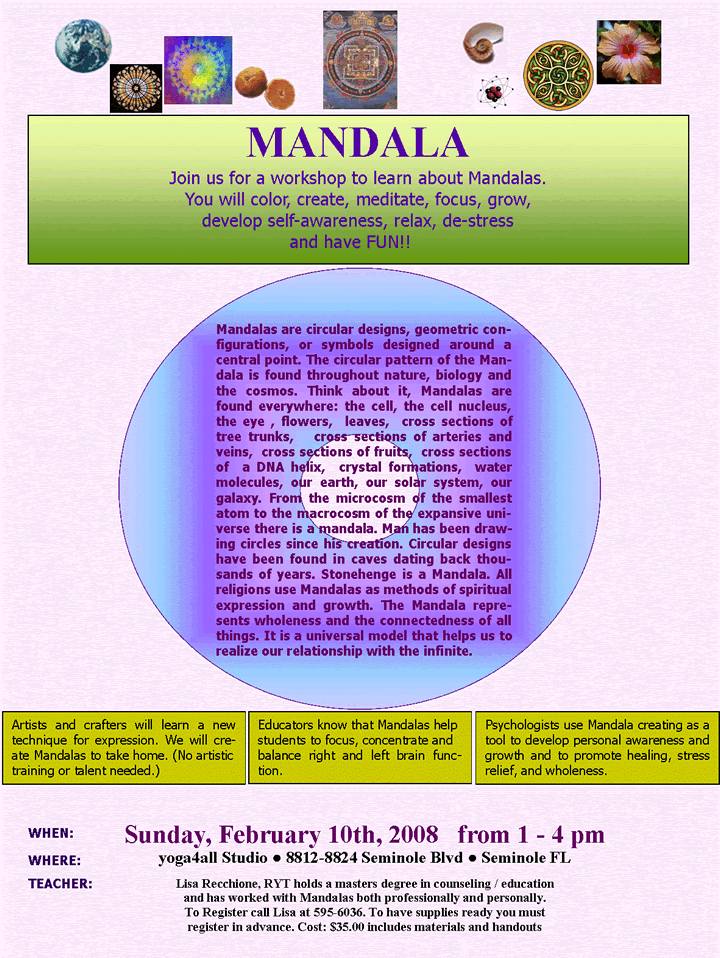Tag: mandalas
Creating Your Own Mandala
The pattern of creation
The word "mandala" is from the classical Indian language of Sanskrit. Loosely translated to mean "circle," a mandala is far more than a simple shape. It represents wholeness, and can be seen as a model for the organizational structure of life itself–a cosmic diagram that reminds us of our relation to the infinite, the world that extends both beyond and within our bodies and minds.
Describing both material and non-material realities, the mandala appears in all aspects of life: the celestial circles we call earth, sun, and moon, as well as conceptual circles of friends, family, and community.
"The integrated view of the world represented by the mandala, while long embraced by some Eastern religions, has now begun to emerge in Western religious and secular cultures. Awareness of the mandala may have the potential of changing how we see ourselves, our planet, and perhaps even our own life purpose."
(From Mandala: Journey to the Center, by Bailey Cunningham)
The above information comes from:
http://www.mandalaproject.org/What/Index.html
Mandala (Sanskrit "circle", "completion")[1] is a term used to refer to various objects. It is of Hindu origin, but is also used in other Dharmic religions, such as Buddhism. In the Tibetan branch of Vajrayana Buddhism, they have been developed into sandpainting. In practice, mandala has become a generic term for any plan, chart or geometric pattern that represents the cosmos metaphysically or symbolically, a microcosm of the Universe from the human perspective.
In various spiritual traditions, mandala may be employed for focusing attention of aspirants and adepts, a spiritual teaching tool, for establishing a sacred space and as an aid to meditation and trance induction. Its symbolic nature can help one "to access progressively deeper levels of the unconscious, ultimately assisting the meditator to experience a mystical sense of oneness with the ultimate unity from which the cosmos in all its manifold forms arises." [2] The psychoanalyst Carl Jung saw the mandala as "a representation of the unconscious self,"[3] and believed his paintings of mandalas enabled him to identify emotional disorders and work towards wholeness in personality. [4]
- For a Wiktionary definition refer: Mandala.
- See David Fontana: "Meditating with Mandalas", p. 10
- http://www.crystalinks.com/mandala.html Note: I do not know this website personally. It is cited on Wikipedia.
- See C G Jung: Memories, Dreams, Reflections, pp.186-197

